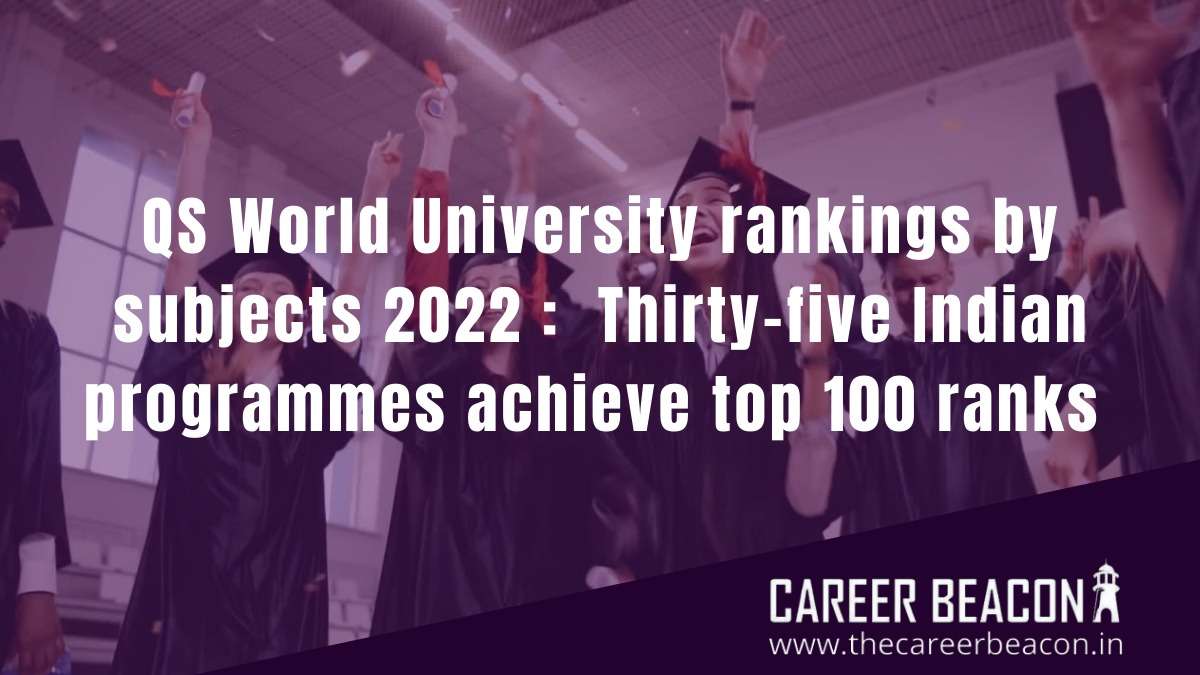
Indian programmes achieve top 100 ranks in QS World
Five IITs, two IIMs, Jawaharlal Nehru University and Delhi University, are among the 16 higher education institutes in India that collectively offer 35 programmes that globally rank among the top 100 in their respective subject categories. According to the 12th edition of the Quacquarelli Symonds (QS) World University Rankings by Subject.
Seven out of 11 Institutes of Eminence (IoE), identified by the government for an upgrade to world-class status, offer some programmes ranked top 100 by the QS. The previous edition of the QS rankings by subject featured 25 programmes offered by 12 educational institutes in India.
Like in the previous rounds, at 19, engineering courses account for the maximum number of programmes offered in India that made it to the top 100 list. But, again, IIT Bombay leads the pack with as many as eight of its engineering programmes – Mineral and Mining, Electrical and Electronics, Mechanical, Computer Science, Chemical, Materials Science, Art and Design, Civil and Structural – finding a place in the top 100.
Significantly, the two programmes that registered the best performance among Indian institutes offered by the Saveetha Institute of Medical and Technical Sciences and Indian School of Mines (ISM) University, Dhanbad, two institutes that broke into the top 100 categories for the first time.
The Tamil Nadu-based Saveetha Institute of Medical and Technical Sciences dentistry programme is ranked 18th globally, while Mineral and Mining Engineering offered by ISM Dhanbad is on 26th rank.
Apart from Saveetha Institute of Medical and Technical Sciences, the only private higher education institute that made it to the top 100 in the OP Jindal Global University, its law programme placed 70th globally.
Two Indian universities achieved top-100 ranks in Business and Management – the Indian Institute of Management (IIM)-Bangalore and IIM-Ahmedabad.
The QS research director Ben Sowter mentioned that 2020’s NEP will set a 50% gross enrolment ratio by 2035.
The researchers of the QS ranked the institutions based on scores in academic reputation, employer reputation and research citations per paper, among others.
The scores are an outcome of the analysis of responses from around 13,000 academics worldwide, employers, the study of productivity and impact of the published work of a scientist or scholar based on citations drawn by it, and the “ability of institutions to diversify the geography of their international research network by establishing sustainable research partnerships with other higher education institutions,” according to the methodology of the rankings shared by the QS.
Related Posts

SBM Bank India names Ashish Vijayakar as MD & CEO

Officenet Unveils State-of-the-Art Cascading Organizational Goals Feature to its platform, revolutionizing Work Dynamics
